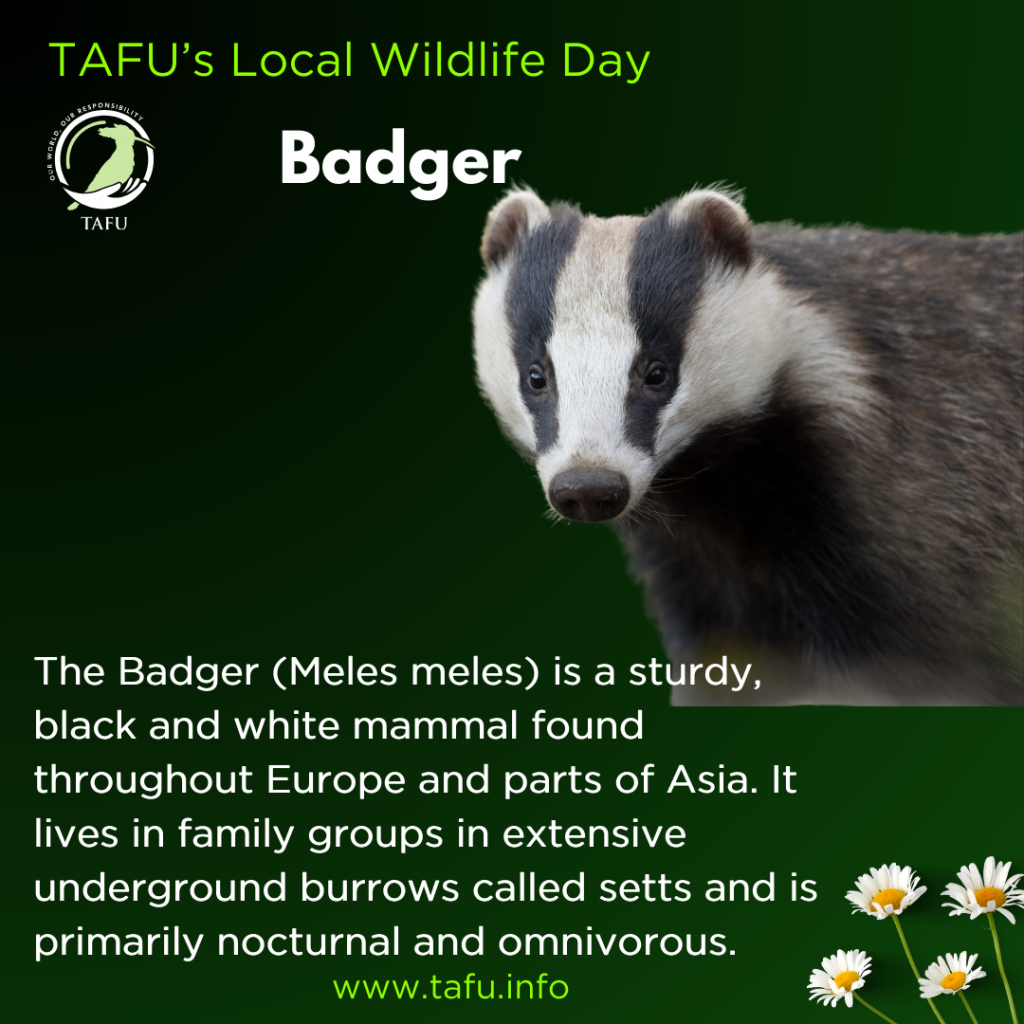Badger
As part of the countdown to TAFU’s Local Wildlife Day on the 11th of July – Species no. 18.
Stay tuned – 25 more days and 25 more species until then!
The Badger (Meles meles) is a robust mammal with distinctive black and white facial stripes, weighing between 8 and 17 kg and measuring 65-80 cm in length. They inhabit a variety of environments across Europe and parts of Asia, including woodlands, grasslands, and farmland. Badgers are known for their strong limbs and long claws, which they use to dig extensive burrow systems called setts. These setts can have multiple entrances and chambers and are often occupied by several badger families for generations.
Badgers are omnivorous, with a diet that includes earthworms, insects, small mammals, birds, fruits, and cereals. They are primarily nocturnal, emerging from their setts at dusk to forage. Badgers are highly social animals, living in family groups or clans of up to twelve individuals. They communicate using scent markings from specialised glands and exhibit behaviours such as grooming each other to maintain social bonds.
Reproduction involves a phenomenon called delayed implantation, allowing badgers to mate at any time of the year, with cubs being born in early spring after a gestation period of 7-8 weeks. Cubs are weaned after a few months but often stay with their family group for longer.
Despite their protected status in many areas, badgers face threats from road traffic, illegal culling, and habitat destruction. They are also culled in some regions to control the spread of bovine tuberculosis, although this practice is controversial and its effectiveness is disputed.
To help protect these sweet and distinctive creatures, we can all pay particular attention whilst driving and preserve their wild habitats.

